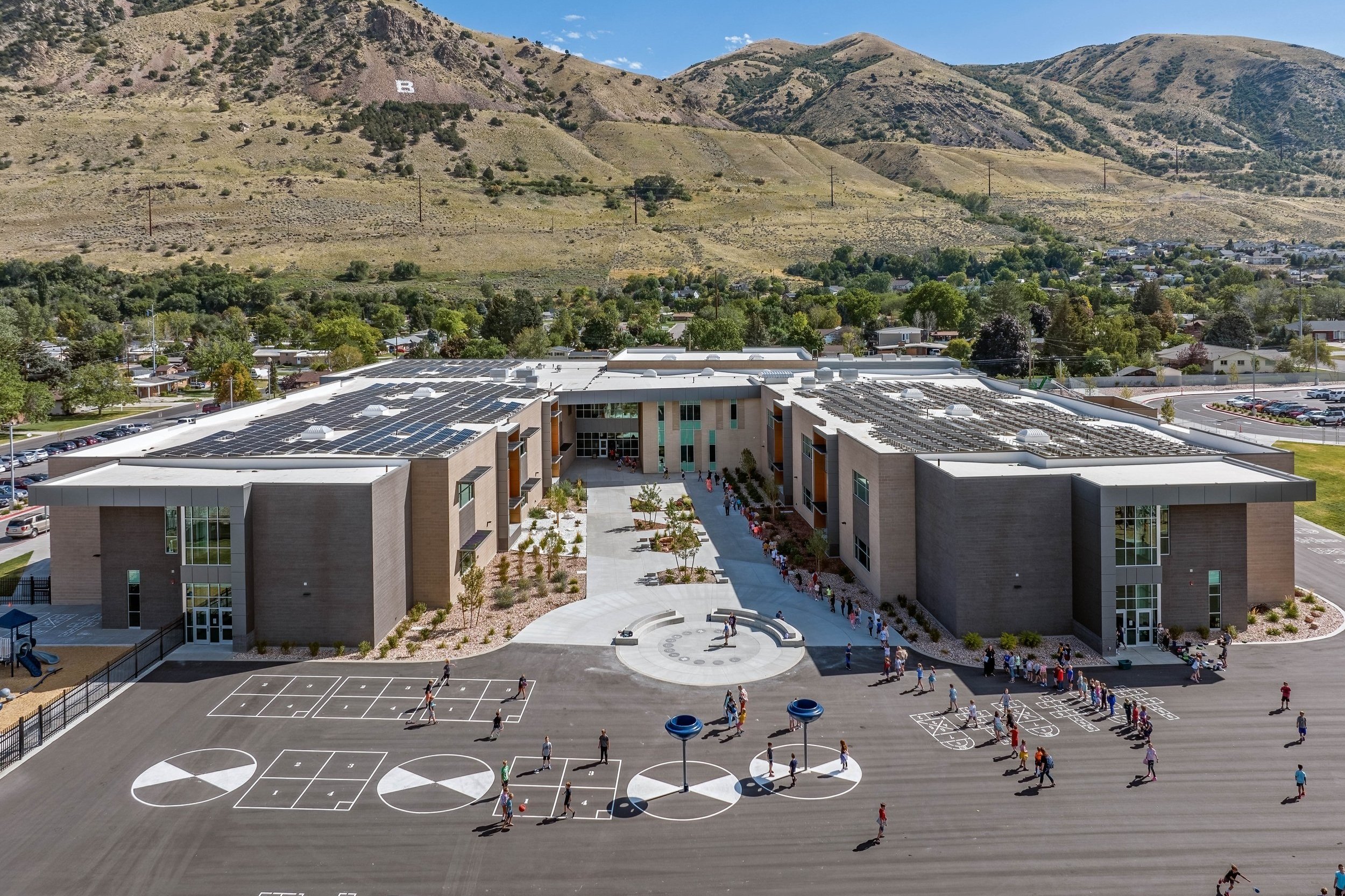Back to School: K-12 Sustainability
As an award-winning innovator for schools, Envision Engineering designed the first Zero Energy school in Utah—a building that produces as much electricity as it uses in gas and electrical power. Helping K-12 schools navigate the ever-changing landscape of new energy technologies, sustainability, and pursuing energy efficiency both in terms of saving resources and costs is an ongoing endeavor. Here’s a few of the latest issues and trends K-12 schools in Utah are experiencing.
Utah’s New Energy Codes Require Submetering
As the majority of Utah’s school districts look to Envision for energy efficient ideas, recommendations, and design, one of the latest hurdles school districts face is addressing a recent change in Utah’s energy building code. From 2018 to 2021, ASHRAE (American Society of Hearing, Refrigerating, and Air-Conditioning Engineers) and IECC (International Energy Conservation Code) have specified new building codes making submetering for electrical systems mandatory in public buildings. The state of Utah recently adopted these codes in 2023 and designers /owners may choose which code to follow. While Ashrae was the first to establish the requirement, IECC later followed with a slightly more stringent standard for mechanical engineers. However, overall, it has been typically less costly for owners to follow the IECC code due to the metering requirement. Now, we have no choice in terms of submetering.
What does this mean for K-12 schools? “Submetering in schools requires separate meters for the various electrical systems within the building or campus. For example, meters to individually measure systems like interior lighting, exterior lighting, HVAC, vertical transportation (i.e., lifts, elevators, etc.), and process loads,” explained Jeff Owen, Principal at Envision. A typical elementary school could require 20-25 submeters at approximately $1,500 per meter depending on how each of the load types can be segregated into branch panelboards. “The challenge for us is finding the value and determining how to best utilize the data these submeters will provide. There is not a lot of benchmark data for these load types to compare information, so energy managers are left scratching their heads as to what to do with the data; it’s a matter of measuring and analyzing the data to see if there are energy saving strategies that make sense,” said Owen.
Adopting Zero Energy Standards for K-12
More and more school districts are building to meet Zero Energy standards. Schools are also embracing the practice of net metering—where solar energy is banked during the summer months to offset lower production in the winter. At a minimum, schools are becoming “Zero Energy Ready”. Designs to easily accommodate the future addition of sustainability features, like solar panels and other technology, are now the norm. “If current budgets don’t allow for solar panels, schools are preparing for the future by incorporating elements to make future additions/renovation for sustainable materials as seamless and efficient as possible,” said Owen. In addition to solar panels, alternate energy sources like wind and battery technology are also being explored, although not typically implemented in Utah schools at this time.
Electrical Equipment and Maintenance Costs
Helping school districts find the best value, weigh the costs vs. savings, and identify the “payback” of various sustainability strategies continues to be a priority. “Evaluating the initial and ongoing costs is an ongoing process. And in today’s market, it continues to be challenging to procure equipment. Combine those issues with the increase cost to borrow money and obtain bonds adds to the difficulty for some school districts,” Owen observed. But continually seeking opportunities to responsibly and successfully conserve energy and reduce costs is a part of our mission and partnership with school districts throughout Utah. For more information on Envision’s services for K-12 schools, click here or reach out to info@envisioneng.com.



